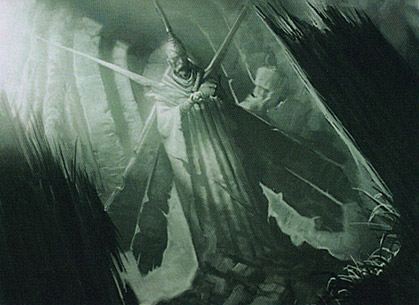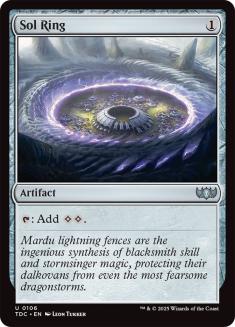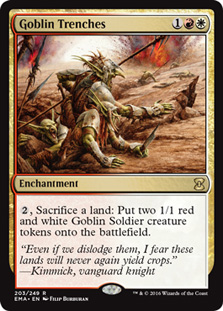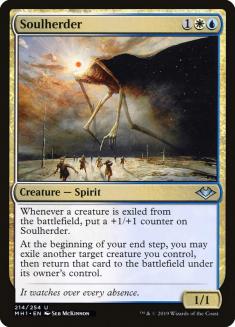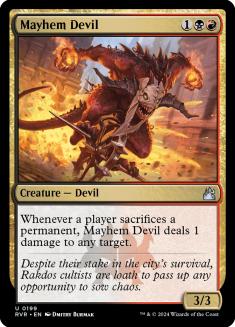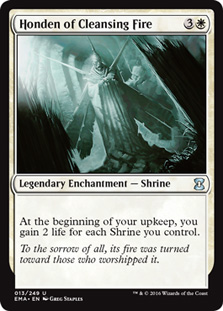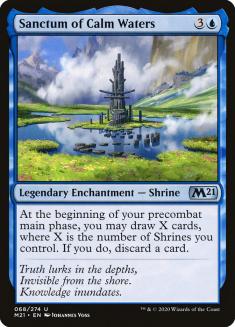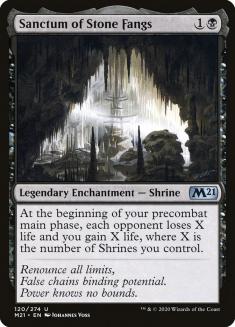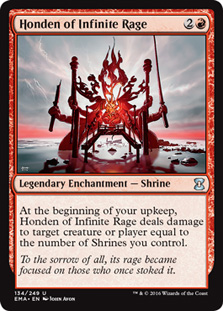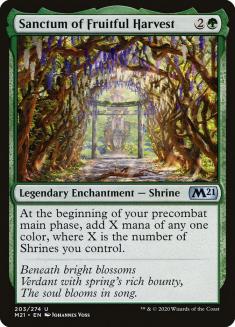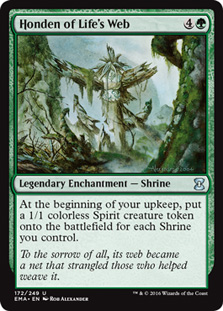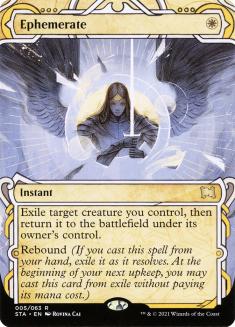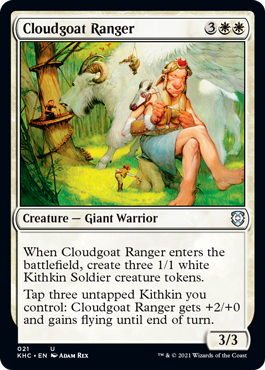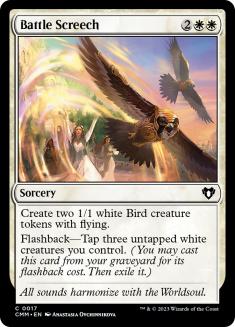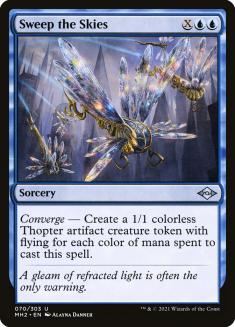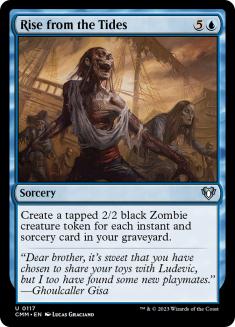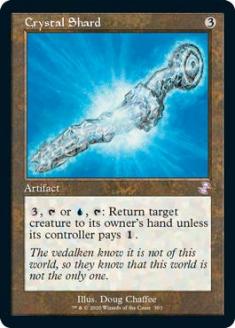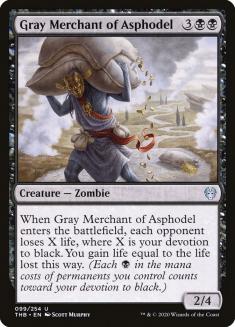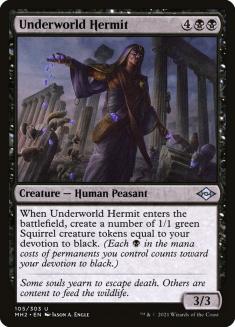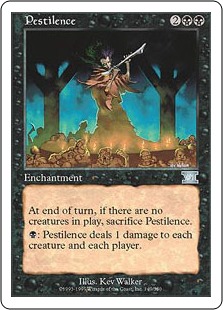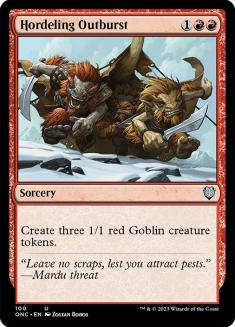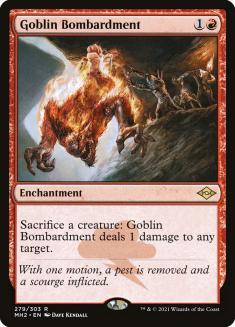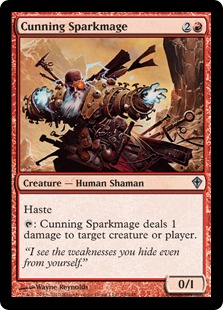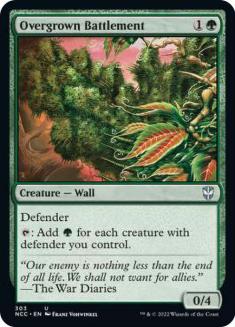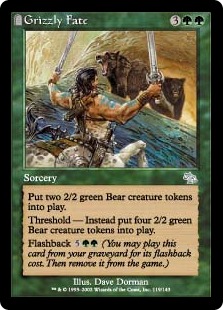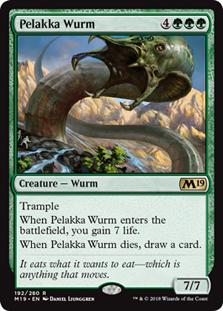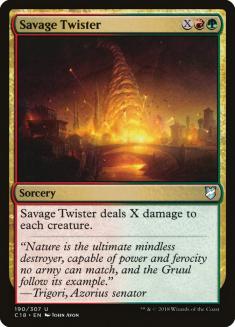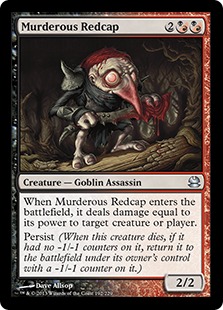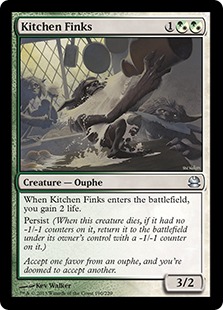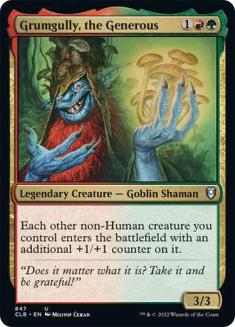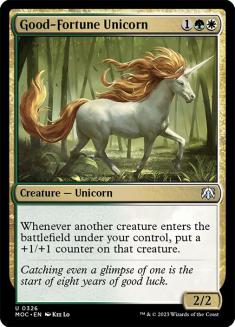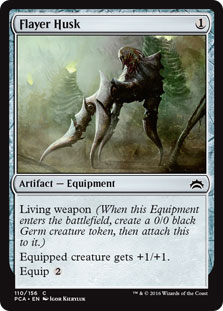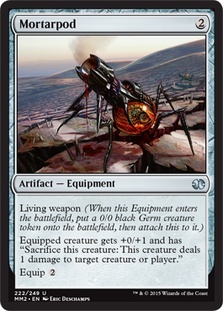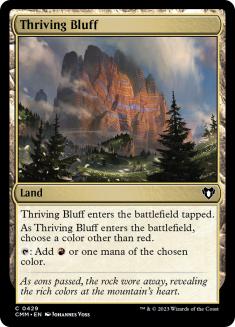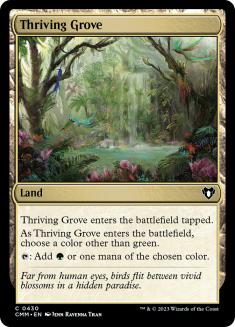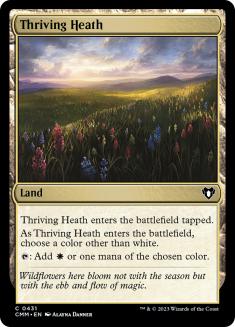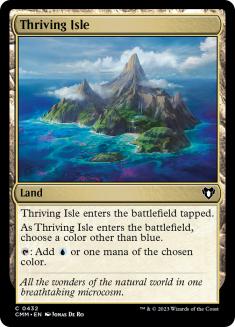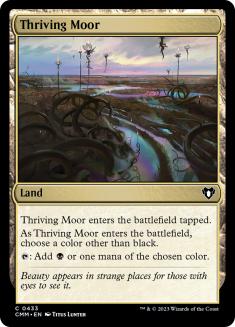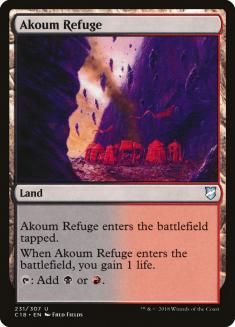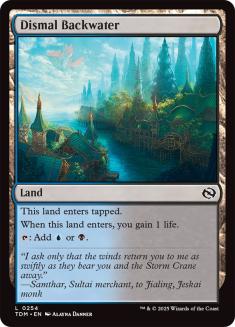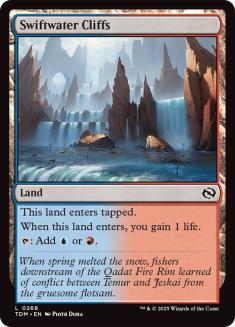How do you do, fellow Cube enthusiasts? If you haven’t experienced Twoberts yet, then know that it’s my personal mission to sell you on trying them out. I know that it’s only going to take one draft to get you hooked, and today I’m here to offer another design for your consideration. Whether it’s because of budget concerns, a desire for a Cube that more closely mirrors traditional Booster Draft, or any of a myriad of other reasons, I’ve noticed that lot of my readers and The 540’s listeners are into Peasant Cube. I’ve taken this trend to heart, and after a few months of work I’m now prepared to share my Peasant Twobert with the world.
If you’re unfamiliar with the concept, a Peasant Cube is a Cube that only features cards of common or uncommon rarities. You’ll see them referred to in text as C/Ubes from time to time, though that’s more of a shorthand than a readable term. If you’re unfamiliar with Twoberts, then this article and our episode of The 540 on 180-card Cubes will catch you up to speed there.
I should also point out that there are some grey areas for the range of cards that people feature in their Peasant Cubes. Demonic Tutor, Sol Ring, and a few other Vintage Cube powerhouses have uncommon printings, but they’re so far above the power level of other non-rares that I personally don’t like what they add to the format. There’s also a difference in cards that have a paper non-rare printing as compared to Magic Online, and for aesthetic reasons I prefer to stick to paper printings. As much as I like Goblin Trenches, the Vintage Masters release wasn’t enough to convince me to include the card.
The Peasant Twobert is my fourth 180-card Cube design after my original model, the Grixis Twobert, and the Tempo Twobert, and of the four I found it to be the most challenging to balance. Some of this is because my experience with rarity-restricted Cubes has largely been that the games are about generating card advantage in some capacity and haven’t involved a ton of meaningful back and forth between the players. I liked the idea of the Cube being largely about generating card advantage, but I spent more time ironing out specific archetypes in this Cube that I had to in previous Twoberts so that I could pinpoint and/or introduce meaningful interaction points to deliver engaging games.
I really enjoyed a lot of the macro-elements of Nega-Cube and decided early on that a Rakdos-centric sacrifice theme and an Azorius-centric blink theme, with tokens bridging the gap between these two themes and green contributing to both strategies as well as just offering a big mana deck, was a good blueprint for a Peasant environment. I married myself to Soulherder and Mayhem Devil early, but I had to change ten to twenty cards per draft when I first put the list together for a few sessions as I learned the sorts of cards that these themes crowded out in addition to tinkering with various forms of interaction between the styles of decks that were showing up.
After several rigorous rounds of updates, you can find my current list here. My most significant finding in early drafts of the Cube was that a lot of games spent a significant number of turns in garbage time, where the outcome was decided but play was technically continuing. Some of this was solved by adding more robust threats, but my major finding was that quality lifegain was the most meaningful tool that I could give to control decks.
I was at a point where the sacrifice decks were offering an absurd amount of reach even when the control decks could fight solid attrition games, and I was facing the reality of cutting Goblin Bombardment and having a lot of the Cube’s infrastructure collapse. Arborback Stomper had been in the Cube from the start and had consistently performed, which was the big motivator for adding some lifelink creatures and seeking out some additional options to allow more back and forth in the later turns. The big find here was Honden of Cleansing Fire, though incorporating it involved figuring out the appropriate implementation of Shrines.
Shrines
I’ve always loved Hondens, and I was very excited when Core Set 2021 added the Sanctum cycle to the list of Shrines. I’ve seen them be varying degrees of interesting and powerful in eight-player Cubes, but I was hesitant to try them in a 180-card environment. I threw caution to the wind for one draft and had all ten Hondens and Sanctums, but that proved immediately to take up too much space in the Cube and was incredibly disruptive to the drafting experience. I went back to the drawing board and concluded that adding more quality enchantment removal and trimming on the total number of Shrines was a good solution. It might look a bit strange at a glance, but my current list features six Shrines.
Most of the non-green colors have a good Shrine and a bad Shrine, so it wasn’t hard to talk me off most of the Shrines that I cut. Honden of Seeing Winds is easily the best Shrine that I removed, and it is cool that it’s powerful absent other Shrines, but its ability not being a may is really awkward in a low-power 40-card format. The asymmetry of having both green Shrines is a little funky, but they’re both solid with any number of other Shrines and this also works well with green’s identity of being the five-color color.
First-picking a Shrine in a draft is a really fun and exciting experience for me, but if it’s not for you, it’s pretty easy to just cut these six cards and move on. You’d probably want to cut Feed the Swarm and Wickerbough Elder at that point, but they’re not a foundational element of the Cube and can be removed without too much trouble if you’re not a fan.
With the more general notes and introductions out of the way, let’s take a look at what each color is up to in my Peasant Twobert.
White
White offers a lot of the foundation for the blink theme as well as a heaping helping of token makers for aggressively slanted decks. Cloudgoat Ranger is great for either theme on top of just being great on rate, and is among the higher picks in the Cube.
Unlike the original Twobert and similar to my Tempo Twobert, I would advise against trying to draft a monocolor deck in this Cube. The mana-fixing is deliberately pushed to make playing two- to five-color decks possible, and the themes of the colors overlap in powerful ways. The token theme in white offers a lot of cards that are solid standalone threats, but they’re at their best when combined with sacrifice outlets and sacrifice payoffs. Going into blue for more blink shenanigans is encouraged, and Selesyna also has some intriguing options for token payoffs in Selesnya Guildmage, Good-Fortune Unicorn, and Ridgescale Tusker.
Lastly, and I know I added an entire section to the article to talk about these cards already, but I just want to highlight that Honden of Cleansing Fire is really powerful in this environment. If you control no other Shrines but can keep pace with your opponent otherwise, you’ll be grateful for the life cushion, and if you get a second Shrine going it starts getting very difficult to race, in addition to the fact that the other Shrines tend to offer some way for you to actually close the game.
Blue
I had a surprising amount of difficultly curating blue for this Cube, and admittedly this had a lot to do with biases I held from curating a 360-card Pauper Cube once upon a time. Basically, the blue decks in my initial list were really good at durdling and really bad at winning. My attachment to cards like Enclave Cryptologist and Looter il-Kor also left the blue decks overly vulnerable to removal spells. I’ve cleaned all of that up at this point, and now the blue decks are much better at grinding and actually closing games. The most significant updates came from the printing of Sweep the Skies in Modern Horizons 2 and my decision to add Rise from the Tides as a build-around control finisher.
In the current list, blue offers a good spread of powerful creatures to blink, some great card selection options, and a couple of solid haymakers. The blue decks do run into some issues when they fall behind in the early-game, but I think that’s definitely a feature for the Cube considering how powerful a lot of the individual cards are.
My blue decks tend to end up in green to pick up some mana acceleration and at least a third color on the splash for some interaction. Going into white for the blink theme or red for solid instants and sorceries also works great. Dimir is among the least synergistic color pairs in the Cube without bridging into a third color, but all of the three-color sets are solid and a deck playing into the black devotion theme that utilizes blue as a support color for card selection does work pretty well in my experience.
Black
Speaking of black devotion, black is the color in the Cube that’s closest to wanting to be monocolor, but even still you will generally be best served playing at least two colors to add some depth to what your devotion deck can do.
Black’s most deliberate pairing is with red for the base of the sacrifice theme, but utilizing cantrips to find your devotion payoffs and/or blink effects to double up on them is a great reason to go into blue or white. Going green offers access to one of the coolest Limited cards of all time in Spider Spawning, and devotion support cards like Dusk Legion Zealot and Phyrexian Rager play great into that theme. I also find Baloth Null to be among the best curve-toppers for generating the meaningful card advantage that’s often necessary to close in this Cube.
Pestilence is the major card in black that’s likely to raise some eyebrows, and I can appreciate other players disliking it. I like to add a few of the historically pushed cards for Limited that should have been rares in rarity-restricted Cubes for nostalgic reasons, and Pestilence is a good tool for the devotion decks that comes with some significant drawbacks. You won’t always have all that much life to play with and the fact that creature removal can get rid of the Pestilence makes it easier to deal with than a lot of enchantments. The high volume of enchantment removal to manage Shrines and the fact that I own a Beta copy is argument enough for me to feature the card, though I do recognize that it’s not for everybody.
Red
The first fifteen or so red slots were easy to figure out for this Cube, but finding threats that were robust enough to round out the sacrifice decks as well as the right mix of removal for controlling decks was rather challenging. I always thought Slice and Dice was really cool in other Peasant Cubes, but it played poorly in too many of the red decks while also being a massive disincentive to playing any one-toughness creatures that ultimately I landed on red sticking to the sacrifice theme without any monocolor sweepers. Cards like Honden of Infinite Rage and Cunning Sparkmage offer some counterplay to the go-wide strategies, and I believe I’ve struck a good balance there.
With all of the tokens running around as well as spot removal spells it’s important for red decks to latch on to some synergies to be able to close games. I had some red one-drops in my initial list but they get outclassed immediately against basically everything so they didn’t last long. Basically your red deck will need to lean in on the sacrifice theme with black, tokens support with white, spells matter with blue, or going big with stuff like Rolling Thunder facilitated by green mana acceleration. This is pretty different from red in a lot of Cubes, which I find to generally be a positive and contributes to the Cube’s identity as a multicolor environment.
Goblin Bombardment is a solid contender for overall Pack 1, Pick 1 in the Cube, which wasn’t difficult to predict once I decided I wanted to include the card. It’s just historically powerful in Cube, and the rarity restriction amplifies that. The implementation of more lifegain effects and to a lesser extent the high volume of enchantment removal does blunt the card’s power, but even still it’s a tough one to pass. There are a lot of directions to go in regard to themes in Peasant Cube, but I enjoy drafting Goblin Bombardment and I don’t currently have it in any of my other Cubes, so I put in the work to support it here.
Green
The go-big color, and the five-color color, green is up to some pretty cool stuff in this Cube. The absence of one-mana accelerants might look odd at first blush, but with all of the mana-fixing lands entering tapped and the general hostility to one-toughness creatures in the Cube, Llanowar Elves actually just sucked. Overgrown Battlement has served much better as a mana accelerant, and the assorted value creatures and big plays have made green a powerful force.
With two Shrines and importantly Sanctum of Fruitful Harvest fixing mana, the Shrine decks are almost always green. Green also provides some strong value creatures for the blink decks, relevant enchantment removal, big lifegain creatures, and some self-mill for the graveyard payoffs. Unsurprisingly, Gruul is the least fruitful of the two-color green pairings, but the power level goes up dramatically once you add a third color, and Savage Twister is among the more powerful control cards in the Cube.
The last thing to touch on in green is the busted card that I feature in the Cube for nostalgia reasons. Sprout Swarm is pretty infamous, and a lot of players really hate losing to it, which is understandable. Something about those complaints really reminds me of my early Cube days with my Pauper Cube, but the play patterns are admittedly horrible. Yes, it does bolster the token and sacrifice themes, but it’s not necessarily the best card to have around. Cutting it for some value creature or Abundant Harvest would likely improve the environment, but that choice is on you. I’ve made my bed.
Gold
As is generally the case in these good-stuff-style Cubes, the average gold card is more powerful than the average monocolor card, and a lot of the gold slots are allocated to flagship cards for the supported archetypes. I’ve also tucked an infinite combo away here because, as I keep mentioning, I do like to have a few power level outliers.
Most of the gold cards in the Cube speak for themselves, though the Simic slots are a bit peculiar. There are some more expensive Simic cards that I like a fair amount, but I found that the Simic-based decks have plenty of stuff to do for five or six mana, and featuring a bunch of cheap Simic cards that facilitate mana development was far more desirable than more expensive stuff.
The mana-fixing lands in this Cube make it relatively easy to play whatever set of colors you want, so I wouldn’t shy away from gold cards during the draft. You’ll want to pay close attention to your mana curve and what your deck is trying to accomplish, but I wouldn’t generally consider a card being multicolor to be much of a drawback here.
Artifacts
This sure came close to just being “artifact” but we do have two! I tried a couple of different mana rocks, but they didn’t add anything meaningful to the environment, and these living weapon Equipment are decent tools for token decks.
Mortarpod is pretty plainly weaker than Goblin Bombardment, but being colorless, offering a body, and offering an additional sacrifice outlet are all valuable. Flayer Husk is much more expendable but it’s nice to up the volume of one-drops in the Cube a little, and everything else I tried on that front fell pretty flat. A colorless option is ideal on that front so that any deck that gets the idea that it wants to be low to the ground can play it, and the Husk has felt worth the slot.
Lands
Last but certainly not least, we have the lands. Ten trilands and eight five-color lands leave the Cube with eighteen nonbasics that all fix for three or more colors, exactly 10% of the Cube. This is significantly fewer lands than I’ve featured in previous Twoberts, but with each land fixing for more colors I’ve been pleasantly surprised with how this spread has played out. I’ve been particularly impressed by the Thriving lands.
I had played with these in a couple of non-rarity-restricted Cubes before, but they really get to show off their power in a Cube where all of the mana-fixing lands enter the battlefield tapped. I’ve generally found that establishing one or two base colors is important for playing three or more colors with the tools available in this Cube, but that five-color decks are absolutely possible if you’re smart about drafting them. This involves both drafting lands highly and being somewhat wary of double-colored spells, and I’ve been happy that the five-color feat is difficult but possible.
If you’re less into five-color decks, and in particular if you don’t like the Shrine package, then I like substituting the trilands for ten two-color lands that gain a life when they enter the battlefield. This will significantly curb the power of manabases while still offering some of that much-desired lifegain.
You’ll often hear me say that Cube is a matter of self-expression, and as such I have presented my build of a Peasant Twobert today with some relevant pivot points if you’re not fully into this exact experience. A really nice thing about Peasant is that it’s much cheaper to make changes if you decide you don’t like something about the Cube than it is for most Cubes. That said, I’ve enjoyed working on the puzzle of implementing a Peasant Twobert a lot, and am happy with where I ended up.
If you’re a fan of my list as is or I’ve got you thinking about working on your own Twobert, then I’ve accomplished my mission. If I haven’t hooked you on Twoberts yet, I’m not about to stop trying. They’ve been my favorite way to play Magic with two or four players, and I’ve yet to play with anybody who has disliked them.

